Bringing Pets to Hawaii
By Hawaii.com Team
The rule change shortened the quarantine confinement for pets that meet requirements before they get here, reducing the stay to five days or less rather than the present 30- to 120-day quarantine.
State officials have enforced a quarantine since 1912 to ensure that rabies is not introduced into Hawaii, the only state free of the disease. Till now, the confinement period was reduced only once — in 1997, when a 30-day option began.
The main fear has been that a rabid pet could come in contact with a mongoose or other feral animal, spreading the disease in the wild.
Veterinarian Isaac Maeda, program manager at the state’s rabies quarantine branch, has said a department analysis last year showed that reducing quarantine to five days “does not substantially increase the risk of introducing rabies into the state,” as long as the program includes proper rabies vaccination, blood tests and a 120-day waiting period before animals arrive.
The five-day quarantine, which goes into effect on June 30, will be a third option for bringing pets to the state. Under the new program, pets that meet state criteria may be released from the airport directly to their owners or stay a maximum of five days at the quarantine station.
To have a pet released at the airport, an owner would also have to provide documentation 10 days before arrival that the other requirements had been met.
Pet owners hoping for shorter confinement of their animals upon arrival must present proof that their animal has had two rabies vaccinations, microchip implantation for identification and clean results of blood serum tests. Quarantine costs for the reduced confinement program will be $165 if the pet qualifies for direct release from the airport and $224 if the pet must be held for up to five days.
RULES SUMMARY :
To qualify for a five-day pet quarantine, owners must prepare at least four months in advance:
- Pets will need a microchip implanted for identification.
- The pet will need a rabies shot and a booster, which can be no less than three months apart and not more than one year apart.
- Animals should have passed a blood serum test, with results e-mailed to Hawaii officials by the testing lab. Pets cannot enter the state till 120 days after the blood sample is received by the state.
- Hawaii officials must receive a health certificate from the pet’s veterinarian at least 10 days before the animal’s arrival, with all test results and health certificates sent by e-mail to prevent fraud.
- At the airport, animal quarantine officials will inspect every incoming pet, check its chip to confirm its identity and release the animal to its owner if everything is in order.
Contact info:
Hawaii Department of Agriculture
Animal Quarantine Station
99-951 Halawa Valley Street
Aiea, Hawaii 96701-5602
Website: www.hawaiiag.org/hdoa/ai_aqs_info.htm

Visiting Hawaii
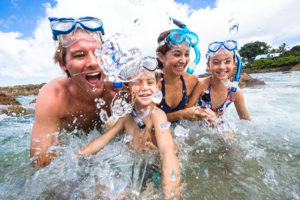
So Many Choices, So Little Time: Hawaii’s Most Popular Activities

14 Romantic Places in Hawaii

Visitor Information

5 Ways to Be a Better Traveler to Hawaii
What's popular.

Road Trip: Drive Around Oahu in a Day

Meet the Majestic Humpback Whale: Hawaii’s Ocean Giants

Visiting Pearl Harbor: Everything You Need To Know

Black Sand Beaches in Hawaii: A Complete Guide
Get hawaii travel deals by email for free.

How to Fly to Hawaii with a Dog & Skip Quarantine
While dogs and other pets are allowed to travel to Hawaii with you, it’s one of the most difficult places in the USA to visit with your dog, requiring more preparation than any other state, including the possibility of quarantine.
If you’re planning to travel to Hawaii with your dog, whether it’s for a holiday or you are moving with pets to Hawaii, here are all the steps that you need to follow, to ensure that your pet is allowed in without any quarantine. I’ve also detailed the pet policies of airlines flying to Hawaii, including which ones allow pets to fly in the cabin to Hawaii.
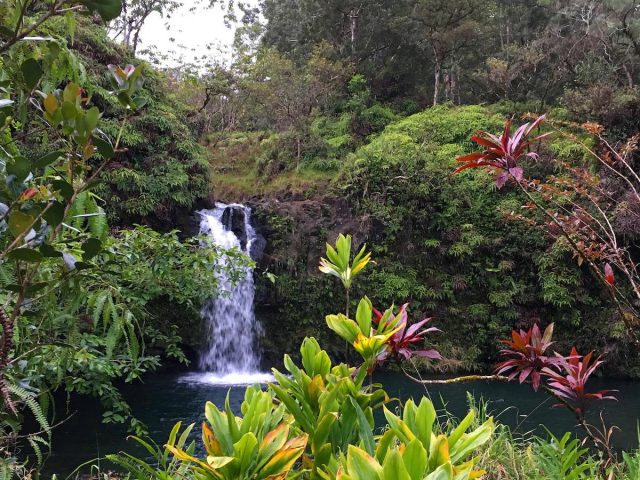
Why is Hawaii So Strict with Pets Entering the State?
Hawaii by far has the strictest rules in the United States for pets travelling to the state, with far more preparation required than any of the other 49 states. The reason for this is that Hawaii is rabies-free (like many island nations, such as Australia and New Zealand), and they want to keep it that way.
The only other part of the US that is as difficult to travel to with a pet is Guam. This is because Guam is, you guessed it, also rabies-free.

Is Quarantine Required for Pets Travelling to Hawaii?
There is a chance that pets arriving in Hawaii may be quarantined for up to 120 days. This is what would apply if you arrived in Hawaii without any preparation (or if you missed some of the steps). This also applies to pets with failed blood tests and puppies or kittens that aren’t old enough to complete all the steps.
However, there is a newer “5 Days or Less” quarantine program that pets may qualify for, if you complete all of the required steps. In particular, pets following this program may qualify to be released directly to you at the airport (“Direct Airport Release”), with no quarantine period at all, if all steps are followed, including submitting paperwork in time.

Looking for dog-friendly beaches on Oahu? Check out this list by the Hawaiian Humane Society
The 4 Steps to Prepare Your Dog or Cat to Travel to Hawaii
To ensure that you dog or cat qualifies for the Hawaiian “5 Days or Less” quarantine program (and ideally Direct Airport Release), start preparing well in advance. The following steps are required. For the full details of these requirements, see the government checklist , plus the latest information page , including warnings of any delays.
1. Microchip
Have your dog or cat implanted with a microchip. This doesn’t need to be done before the rabies vaccine (although that’s a good idea, if you later want to travel to the EU with your pet), but needs to be done before the rabies titre test.
2. Rabies Vaccinations
Vaccinate your dog or cat for rabies. This needs to be done at least twice, more than 30 days apart. The most recent rabies vaccine needs to be have been administered more than 30 days before you arrive in Hawaii, plus still be current. Your veterinarian should give you a rabies vaccination certificate for each vaccine; see the checklist for the full requirements of this certificate.
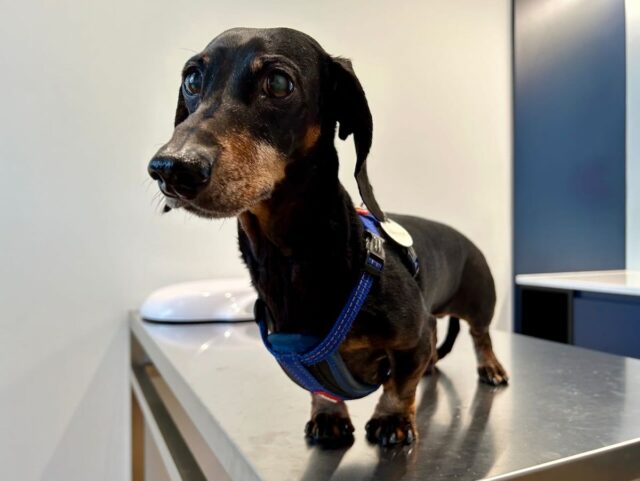
3. Rabies Titre Test
Do a FAVN rabies antibody titre test for your dog or cat. There is no government requirement to wait a set number of days after the rabies vaccination, but ideally it should be done around 30 days or later after the vaccine, no earlier than 3 weeks after a rabies vaccine for a successful result.
Your veterinarian will take a blood sample from your pet, then needs to send it to one of three laboratories for testing (Auburn University, Kansas State University or the DOD Food Analysis and Diagnostic Laboratory in Texas). The day after the laboratory receives the blood sample must not be more than 36 months and not less than 30 days before your arrival date in Hawaii.
The result of this blood test must be greater than or equal to 0.5 IU/ml. This blood test result will then be directly accessible by the authorities in Hawaii (as long as the destination is listed as “Hawaii” on the lab submission form). You can also check the status of the test here .
Note that in the last couple of years, delays in processing rabies titre tests have been experienced, so allow plenty of time. As of May 2023, delays of up to 1 to 2 months were being experienced.
4. Provide Required Documents
You are then required to mail or courier all the required documents to the Animal Quarantine Station (AQS) in Hawaii, to be received at least 10 days before your arrival date. The following documents are required:
- Dog & Cat Import Form AQS-279
- Two original rabies vaccination certificates, see the checklist for full details
- Health certificate from a veterinarian, from within 14 days of your arrival date. Ideally this should be the original; if not, you need to provide the original on arrival in Hawaii. The veterinarian must also treat your pet for ticks within 14 days of your arrival date and record this on the health certificate.
- Cashier’s check or money order for $185 for Direct Airport Release or $244 for “5 Days or Less” (refunds can be requested for excess payments).
Note that if your paperwork is not received by the authorities at least 10 days before your arrival date, your pet’s release could be delayed. Plus, you will be charged the higher fee of $244.
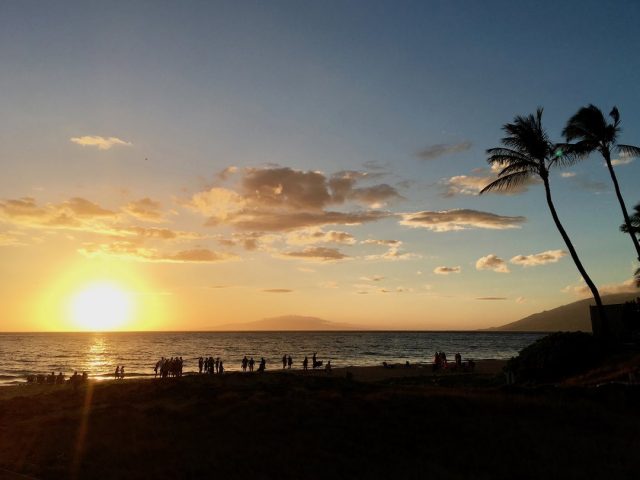
Minimum Preparation Time
There is no requirement to only have the rabies titre test after the 2nd rabies vaccination, instead it can simply be done after just the 1st rabies vaccination. This means the minimum preparation time is around 60 days, if you firstly vaccinate your dog or cat, wait nearly 30 days, have the rabies titre test plus a 2nd rabies vaccination, then wait the additional 30 days.
However, you also need to send in your paperwork at least 10 days before arrival (otherwise your pet’s release could be delayed). With the delays recently experienced for rabies titre tests of 1 to 2 months, it is likely your paperwork will not be ready in time.
Are There Any Exceptions?
If you are travelling directly to Hawaii with a pet from the British Isles, Australia, New Zealand or Guam, there are less steps required (including no rabies titre test), as these locations are also free of rabies.
Pets are exempt from quarantine, and will be released immediately, if they are certified to have been resident of the country for at least 6 months, the animal is transported in either a single aircraft or only transferred between aircraft under strict conditions, and there are no signs of disease on arrival. An original official health certificate within 14 days of transport is still required.
For more information, see here .
Flying Directly to Islands of Hawaii, Maui or Kauai
If you are wanting to fly directly to the islands of Hawaii, Maui or Kauai, then the steps are slightly different and more onerous. A slightly different set of documents are required to be sent in at least 30 days in advance, and you need to request a Neighbor Island Inspection Permit. See the full checklist .

How to Fly to Hawaii with Your Dog
Not all US airlines that fly to Hawaii will fly pets to the island state. Plus out of the airlines that fly from the continental USA to Hawaii, many have different pet policies when it comes to flying a dog to Hawaii.
If you’d like to fly to Hawaii with your pet in the cabin, choose from these US airlines .
Flying a Pet to Hawaii with Hawaiian Airlines
Hawaiian Airlines is one of the best airlines to fly to Hawaii with your pet dog. Hawaiian Airlines permits pets to fly both in the cabin and as checked baggage, with only a few restrictions.
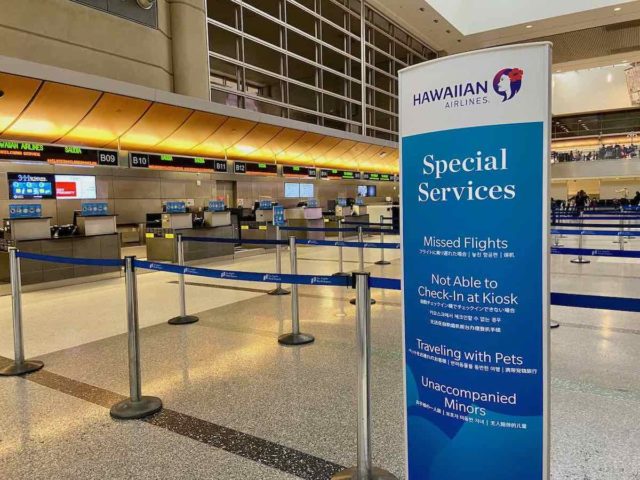
Pets are permitted to fly in the cabin on flights both to and from Hawaii, except for flights from or to JFK (New York City), BOS (Boston), AUS (Austin) airports and international destinations. A maximum weight of 25 pounds (11.3kg) applies. The carrier should be no larger than 16″ x 10″ x 9.5″.
Alternatively, when flying as checked baggage, the maximum combined weight for your pet and their kennel is 70 pounds (31.7kg), with a maximum carrier size of 36″ x 25″ x 28″. Otherwise, they’ll need to fly as cargo.
In either case, book your pet at the same time as your own booking, with availability information available by calling Hawaiian Airlines Reservations. Hawaiian Airlines also accepts pets on inter-island flights .
Flying a Pet to Hawaii with Alaska Airlines
Alaska Airlines also allows pet dogs and cats to fly to and from Hawaii, both in the cabin and as checked baggage.
Pets are permitted to fly to Hawaii in the cabin year-round, but there are seasonal restrictions on the number of pets who can fly as checked baggage, due to strong headwinds at times. No pet dogs or cats can fly as checked luggage to or from Hawaii during February, with reduced numbers from November to 1st April.
Call their call centre to make a booking and double check the full rules.
Pet Policies for Other Airlines
None of the other USA airlines that fly to Hawaii currently allowed pets in the cabin, although they may allow pets as checked baggage or as cargo. These are the policies of other airlines:
American Airlines: American Airlines does not fly pets in the cabin to or from Hawaii. However, they will fly pets as checked baggage to and from Hawaii, but only on flights to Honolulu or connecting via Honolulu. Pets are also not accepted on departures out of Honolulu before 8am from 5th March to 1st November.
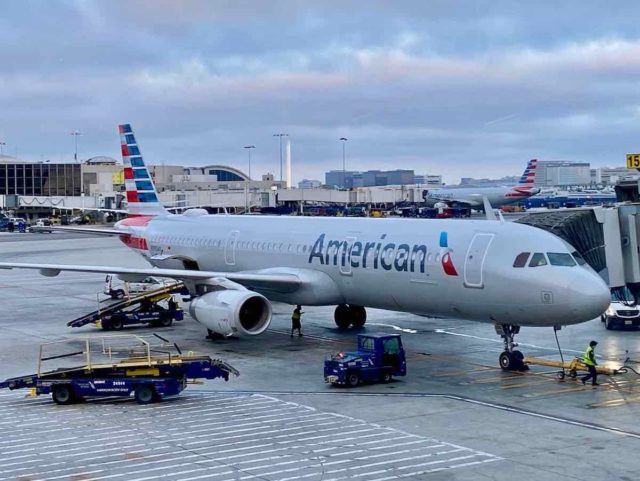
Delta Air Lines: Delta does not fly pets in the cabin to Hawaii, although it’s not clear if they prohibit pets on flights leaving Hawaii. There is the alternative option to fly pets as cargo.
Southwest Airlines: Southwest Airlines doesn’t transport pets to or from Hawaii, although they will fly pets on inter-island flights .
Sun Country Airlines: Sun Country only permits pets in the cabin on flights on the 48 contiguous states.
United Airlines: United Airlines doesn’t allow pets on flights to, from or through Hawaii.
Arriving in Honolulu with Your Pet
It’s best to ensure that your pet arrives at Daniel K. Inouye International Airport in Honolulu between the hours of 8am to 3:30pm . It takes up to an hour for pets to then be transferred to the Airport Animal Quarantine Holding Facility (AAQHF), and their inspection hours are 8am to 5pm daily (including weekends and holidays).
At the AAQHF your pet will be inspected , including checking for ticks and other parasites. If all paperwork was received on time and is in order, plus no ticks, parasites or signs of disease are discovered, your pet should be eligible for Direct Airport Release.
Direct Airport Release means that you are able to pick up your pet from AAQHF immediately after their inspection is complete (about 1 to 2 hours after arrival, although delays have been common in the last couple of years, due to the coronavirus pandemic). AAQHF is located in between Terminals 1 and 2, only 120 yards from baggage handling.
Just ensure that you have proper transportation for your pet, especially large dogs, as your pet must stay securely in its container until you leave airport property.
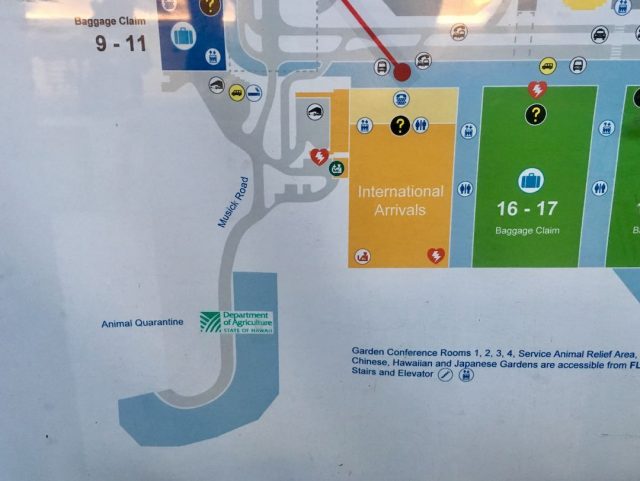
If your pet arrives after 4:30pm, it will be held at least overnight, until inspections are completed the following morning. You then need to pick up your pet from AAQHF between 8am and 10am the next morning, otherwise it will be transferred to the “5 Days or Less” program and taken to the Animal Quarantine Station (AQS).
If you’re planning on immediately flying to another island , it’s important to note these hours. Note also that if Federal airport security advisories prohibit Direct Airport Release, then you will need to pick up your pet the following day from AQS even if everything else is in order.
What If Your Pet Requires Quarantine?
Ideally your pet is eligible for Direct Airport Release. However, there are some circumstances where this doesn’t apply, and instead the “5 Days or Less” animal quarantine program applies:
- AQS didn’t receive your paperwork at least 10 days in advance
- You submit paperwork only on arrival
- There are discrepancies with original documentation, including the microchip number
Additionally, if yourself or an authorized person is not able to pick up your pet on the arrival date (e.g. if you are flying to Hawaii a couple of days later), you can elect to use the “5 Days or Less” program.
A longer stay in Hawaii pet quarantine is required if your pet arrives earlier than permitted (based on their latest rabies vaccination or rabies titre test), their rabies titre test result is not successful, or a tick, other parasite or sign of disease is discovered.
Whether your pet is participating in the “5 Days or Less” program or a longer stay in quarantine is required, they are transferred to the AQS. This is located in Aiea, about 4 miles from Daniel K. Inouye International Airport. Additional charges will apply for longer quarantine stays; check with AQS.
Pets are housed in individual kennels, suitable for their breed and size. Generally dog kennels are outdoor, except for a sheltered area, suitable for a bed. You need to provide bedding for your pet. Visits are allowed, generally in the afternoon, except for on Mondays, Fridays and state holidays. Check the visiting hours on the AQS website.
Following a stay at the AQS, you will be required to pick up your pet from the facility, on the required date, during the pick-up hours.
For further information on all aspects of travelling to Hawaii with a pet, including Hawaii pet quarantine, head to the Animal Quarantine Information Page .
Flying Out of Honolulu Airport with a Pet
Daniel K. Inouye International Airport in Honolulu is one of the most pet-friendly airports anywhere in the USA, let alone the world. Unlike most airports where you’re stuck inside once you go through security, the main overseas terminal has outdoor areas, perfect for both human and four-legged enjoyment.
Follow the signs to the Cultural Gardens , where you can enjoy a wander through a series of Chinese, Japanese and Hawaiian-influenced gardens, complete with ponds, waterfalls and real grass. Yes, you take your dog for a walk on real grass after security. Of course, make sure you clean up!

There are also multiple service and transit animals relief areas at the overseas terminal at Honolulu Airport. One is located downstairs next to the Cultural Gardens (where there is also a handy poop bag dispenser), while there is also a second relief area next to Gate B1.
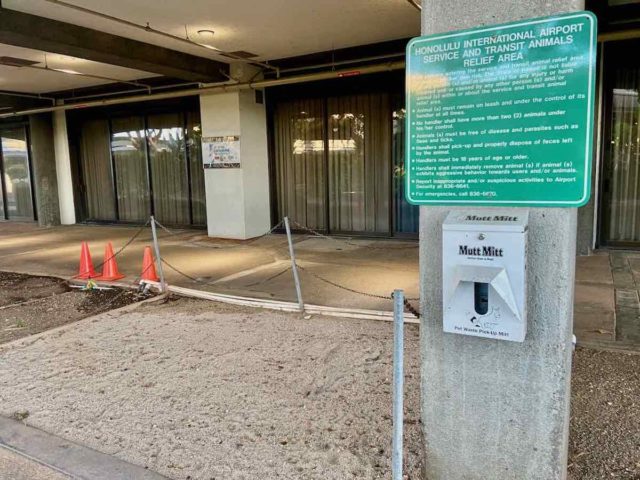
You May Also Like
- Hawaiian Interland Flights (including pet policies)
- Money Saving Tips for Waikiki
- Dog-Friendly Los Angeles
About the Author

Shandos Cleaver is the founder of Travelnuity: Dog-Friendly Travel. She has travelled extensively with her Miniature Dachshund, Schnitzel, including to 33 countries across Europe, every state and territory of Australia except Tasmania, and 10 of the United States. She’s passionate about providing inspiration and information to others wanting to travel with their dogs, whether close to home or internationally.
Feeling inspired? Pin this to your Pinterest board!
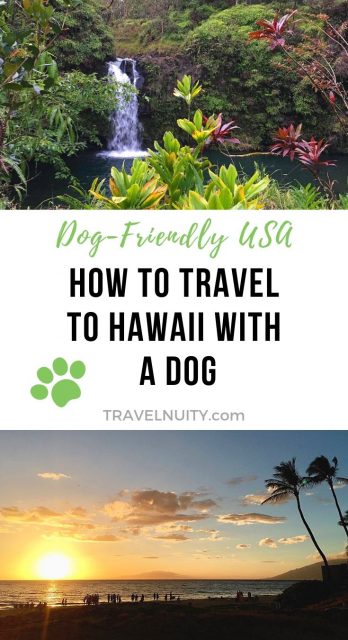

34 thoughts on “How to Fly to Hawaii with a Dog & Skip Quarantine”
I would like to bring my dog from Malaysia to Hawaii. Does my dog need quarantine and how long is the process?
I believe the steps that I have listed also apply to Malaysia. So, if you follow the steps and there are no issues with paperwork or your dog showing signs of illness, no quarantine should be required.
Thanks so much for all this useful information! I know that you wrote this in the New Year, but are you aware of whether any of the restrictions / quarantines have since loosened? We are thinking of flying from US mainland with our dogs to Kauai this summer.
The restrictions and quarantine for dogs weren’t modified by Covid-19, other than delays in the process, so nothing will be loosening for the summer. However, the Safe Travels program for humans flying to Hawaii ended last week. There are now no Covid-related requirements for passengers flying from the US mainland.
The only restriction specific to summer months is the heat advisory. If the temperature is above 85 degrees F, from either the departure location or in HI for that day, including any connecting flights locations, pretty much all airlines will not allow them to fly cargo. This is for their own well being. However, if this restriction applies to dogs flying in the cabin im not certain but I would assume not since the temp is regulated. Snub nosed breeds are also prohibited from flying cargo, eg; pugs, English bulldogs, pekingese etc etc. Some airlines, most airlines, have breed restrictions for Pit Bulls and related PB type dogs, some prohibit PB mixed dogs.
What department in Hawaii should we call (and what is the number) that will have all the information needed re travelling with dogs to Hawaii?
The relevant department is the Animal Quarantine Station. Their phone number is (808) 483-7151 and email is [email protected] . Everything is also covered on their website: https://hdoa.hawaii.gov/ai/aqs/aqs-info/
Can I fly from LA to Hawaii then to Australia with my dog?
Aria, I don’t see any reason why you can’t, although I haven’t heard of other dogs taking this route. The main requirement is whether any airline flies pets from Hawaii to Melbourne, which I’m not sure of, especially as there’s less flights operating still. I recommend speaking to a pet transport company. Note that quarantine for pets will still apply in Australia, plus a long list of other steps to prepare.
Hi! Thank you for this walkthrough. The only thing I can’t seem to find info on is, if you travel with your pup in cabin, once you get off the plane with them, can you then walk over to the inspection office with them or does the airline take them from you when you get off the plane and take them? If it’s the latter, do I just find my way to the inspection area and wait for someone to bring my pup out? Thanks so much!
I’m pretty sure airline personnel take the arriving pets to the holding facility, including if they fly in the cabin. Double check with the airline or airport staff, but it’s probably best to make your own way there.
My wife has a service dog by ADA rule the dog must remain with her so can I assume she would accompany the dog to inspection?
I’m not fully across the rules for service dogs, but I expect so.
Airports, like Federal Government Facilities and religious institutions, do not adhere to ADA regulations. “Do commercial airlines have to comply with the ADA? A. No. The Air Carrier Access Act is the Federal law that protects the rights of people with disabilities in air travel. For information or to file a complaint, contact the U.S. Department of Transportation, Aviation Consumer Protection Division, at 202-366-2220.”
I understand the question is specifically regarding if the airport is allowed to separate the disabled individual from their service animal for the purpose of the animals importation evaluation. The point i was trying to make is airports/tsa dance their own beat. So, whereas a dog must be allowed anywhere their person goes, not sure if the same rules apply in reverse.
Airports/TSA/Feds do what ever the FREEK they want…because you know ‘Musica!, oh and National Security.
So basically… 🤷🏻♀️
We are flying back home to the Big Island with our dog from Phoenix Az. Do you recommend flying to Honolulu first and then taking a inter island flight to help with cost and inspection?
He is also a support animal does this still apply as service animal?
If you have the additional time to send in the paperwork (30 days instead of 10 days) and can make a booking for the inspection on the Big Island, plus your airline allows it, it shouldn’t be too much more complex for the inspection. The costs for inspections on other islands aren’t listed online, so I am not sure how much the total cost compares. I recommend reaching out to one of the two hospitals in Kona, then making a decision.
If transiting through Hawaii from Guam (rabies free zone) to North Carolina, will my pet need to go through the quarantine facility?
No, there is no quarantine for pets flying from Guam, plus less requirements overall. Scroll down to the “Are there any exceptions?” section
Aloha, Did the change in domestic flights allowing dogs in the cabin with our also pertain to international flights. I would like to fly to Australia and pick up a Cavalier I am adopting . As you mentioned in another post Australia now lets dogs fly in cabins domestically. Is this true of international flights as well. I would like to fly from Australia to Hawaii with my new pup in the cabin with me.
While the prohibition on dogs in the cabin has been lifted, it’s up to individual airlines and none of them yet allow pets in the cabin. It’s not clear if the change also applies to international flights, but I’ve also not heard of any international flights departing Australia allowing pets in the cabin.
I am living in New Zealand but would like to spend a few months on Kauai since I have fallen in love with the Island last year. When my dog is all vaccinated and had his check up 14 days before the flight does she still has to go into quarantine? Or when going back to New Zealand? Also, she is a service dog. Thank you.
Travelling from NZ to Hawaii, you shouldn’t need to go into quarantine, especially as there are less requirements for NZ due to its rabies free status. However, I believe a 10 day quarantine period is required for all dogs travelling to NZ. I am not completely across the NZ dog entry requirements, so there is a chance an alternative may be offered to service dogs. I recommend thoroughly researching the requirements to travel back to NZ, as I know for dogs travelling to Australia without any preparation it takes up to 7 months to prepare.
Hello. My daughter is traveling to bring my sons dog to us from California. He is a dachshund and will be with her in cabin. She is flying to Honolulu first with an hour and 15 min layover then flying to Maui. Where does she go after landing. She flying Hawaiian airlines. Will an hour layover be enough time?
Pam – According to the FAQ on the government website ( https://hdoa.hawaii.gov/ai/aqs/faq-for-five-day-or-less-program/ ), 1hr will not be enough layover time. They state it can take airlines up to 1hr or more to transport animals to the Airport Animal Quarantine Holding Facility, then animals are generally processed within an hour of arrival, but delays can occur if there are a large number of animals at the same time, or issues with the paperwork. It is recommended to allow at least 4-5hr for connecting flights. The facility is on the Ewa Service Road.
Hi, in this website you state: Vaccinate your dog or cat for rabies. This needs to be done at least twice, MORE than 30 days apart. In this website https://www.petsthattravel.com/flying-dog-to-hawaii/ it states In order to fly to Hawaii, your dog must have been vaccinated against rabies at least twice in his lifetime. Furthermore, those vaccinations must be NO MORE than 30 days apart. Please clarify if the 2 vaccines must be 30 days apart.
Heather – I have double checked back on the government website, and yes the two vaccines need to be more than 30 days apart. There is an error on the other website. (I have also spotted multiple inaccuracies on other pages that they have published…) It would be quite odd to give two doses of the rabies vaccine that close together!
Hawaiian airlines is changing their pet policy on 6/1/23. Sounds like they will be measuring the carrier AND the dog!! I’m suppose to fly with my dog to phoenix 7/20 and I’m very nervous they won’t accept him. He fits in the “approved carrier” but his head is taller than the carrier.. and according to the new policy.. he wouldn’t be accepted? It’s all very confusing. I bought a bigger carrier cuz I want him to have as much room as possible and I’ve never had and issue with Hawaiian or Alaskan accepting him with that in the cabin but now I’m nervous about this new policy. I might have to start flying Alaskan again but that’s just a long day of traveling (9-11 hours) as opposed to 5-6 hours flying Hawaiian. ☹️ My little guy has been flying with me the past 9 years.. I’ll be so sad if Hawaiian doesn’t accept him. If you hear anything about this new policy please send updates!!
Chelsea – Thanks for sharing. I had seen they updated their pet policy, but couldn’t work out what had changed. So it’s the check of the size of the animal inside the carrier.
Many airlines already had this requirement, but it isn’t always enforced. However, I’ve heard online that more airlines are enforcing this. I recommend asking in a Facebook group (such as my group, https://www.facebook.com/groups/dogfriendlytravelrtw , or a group for pet owners in Hawaii) the experience of others travelling to and from Hawaii during June. Hope this helps!
Hello, I am the Laboratory Director of the newly established One Health-Rabies Laboratory at the University of Missouri. I am happy to announce the initiation of our rabies serology for pet travel by the FAVN method as of June 6th 2023. I and my staff have years of experience in rabies serology. We are offering a price of $79.00 (no additional fees), a 7 to10 day turnaround, and an online submission form for your convenience. See https://vmdl.missouri.edu/one-health-rabies/ for more information. The MU One Health-Rabies Laboratory is recognized by the USDA for rabies serology for pet export purposes, see the USDA/APHIS pet export site for further information, https://www.aphis.usda.gov/aphis/pet-travel/take-pet-to-foreign-country/export-pets . People traveling with their pets is a continuing growing trend. With only a few laboratories currently offering this testing backlogs and delays can occur, causing distress for veterinary clinics and pet owners. Our laboratory’s mission is to provide quality results in a timely manner, we understand the importance of clear communication, responsiveness, and reliable quality. For more information, consult our website above or contact us by phone 573 882-3646 or email at [email protected] .
Thanks for sharing Susan!
Hi! Thank you so much for this incredible information. Did you have a quick release with your pet multiple times over? I am getting ready to move forward with taking my dog there and looking for any encouragement :).
While I’ve personally travelled to many countries with my dog, we still haven’t made it to Hawaii. I’ve spoken to multiple people who have done this. Make sure you allow plenty of time and check that everything has been received.
Leave a Comment Cancel reply
Save my name, email, and website in this browser for the next time I comment.
An official website of the United States government
Official websites use .gov A .gov website belongs to an official government organization in the United States.
Secure .gov websites use HTTPS A lock ( Lock A locked padlock ) or https:// means you’ve safely connected to the .gov website. Share sensitive information only on official, secure websites.
Navigating Pet Travel? Let APHIS Help.
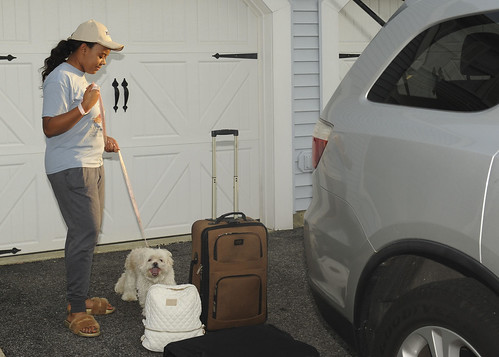
When planning an international trip, we often want to bring the whole family – including our pets . But, did you know taking Fido or Fluffy can be a complex, multistep process that requires advance planning and preparation? To help make this process go smoothly, USDA’s Animal and Plant Health Inspection Service (APHIS) has a few simple steps to follow – and a comprehensive website to walk you through the process.
First. Advance preparation is key. Each country has different animal health requirements that travelers must meet so it’s important to start the process early. Our website covers the requirements for more than 130 countries. Check the APHIS Pet Travel Website for your destination country’s entry requirements.
Second. You will need a health certificate. Almost all countries require a USDA-accredited veterinarian to issue (complete, sign, and date) an international health certificate within a certain number of days prior to your departure to confirm the health of your pet. So, as soon as you know where you will be traveling with your pet, contact a local USDA accredited veterinarian to assist you with the process. With 68,000 private, accredited veterinarians nationwide, it’s likely your vet might be one or can refer you to one. Accredited veterinarians work cooperatively with APHIS to protect U.S. animal health and can certify that your pet is healthy and able to travel.
Third. Getting the health certificate endorsed. After the health certificate is issued by a USDA accredited veterinarian, it will typically need to be endorsed (signed and “stamped”) by your local APHIS office . This can be done by mail or, in some cases, in person. APHIS Service Centers are set up to process your health certificate as quickly as possible – but keep in mind, we process many certificates each year so be sure to leave plenty of time for us to complete this process. Endorsement fees for pet health certificates starts at $38, but will cost more if the destination country requires Federal review of test results. Check the APHIS website here for additional information on endorsement fees.
Lastly, don’t forget to check with your airline carrier to see if they have additional requirements to transport your pet. Make sure you know how to collect your pet at the port of entry upon arrival in your destination country. It’s also important to remember that various U.S agencies regulate the entry of your pet back into the United States – plan ahead and check those requirements on the website before you go.
We know navigating various country requirements for international pet travel can be challenging, and that’s why we’re here to help. If you have any questions about the process at any step along the way, please contact the APHIS Customer Service Call Center at 844-820-2234 or your local APHIS Service Center for more information.
Bon Voyage , Fido and Fluffy!
Hawaii animal travel made easy.
Avoid Hawaii's 120-day rabies quarantine with our Rapid Test Kit. Only $149.

Our Trusted Partners

24% of animals are quarantined
Because it's a rabies-free zone, Hawaii has strict rules for incoming pets. Animals that aren't pre-screened for rabies can spend up to 120 days of quarantine in the state kennel.
Save Hundreds in Vet Bills
Mokupet rate.
Medical Equipment & Shipping
FAVN Lab Diagnosis Fee
FAVN Paperwork
Shipment Tracking
Test Results
Total FAVN Testing Cost
The above rates compare Mokupet to similar veterinary services and do not represent total pet travel costs, which may include import fees, airfare, etc. The above ranges were collected from various U.S. veterinary clinics and may be different for your vet.
How Mokupet Rapid Test Kits Work
#Order the Kit
Get a kit delivered to your door. We'll even expedite it if you're in a rush.
#Visit Your Vet
Bring the kit to your next vet appointment. Instructions for your veterinarian are inside.
#Wait for Approval
Lab results are ready within 30 days, and you'll be notified immediately. Faster testing options also available.
Compare to DIY & Traditional Pet Movers
The hardest part of brining a pet into Hawaii is knowing what to do. Our At-Home Kit provides everything you need to do it (almost) by yourself at a fraction of the cost of movers.
Do-It-Yourself
Other movers.
Avg time spent
Refund policy
Military reimbursement
Document preparation
Health certificate
Trip checklist
Step-by-step instructions
Digital trip timeline
FAVN test equipment
Cold overnight shipping
Vet checklist & receipt
Confirmation of pass/fail
Types of animals
Premium service, everyday price.
Pet passport.
Mokupet completes all the necessary paperwork and handles all payments for you ahead of schedule.
Veterinary Kit
With Mokupet, your vet gets everything they need to prepare your pet's travel and avoid quarantine.
Travel Insurance
If your pet's travel is unexpectedly disrupted, Mokupet covers rebooking and boarding fees.
Making pet travel to Hawaii easy and affordable for everyone.
Save Time on Paperwork
Enter the info below and we'll pre-fill the paperwork for your vet at no extra charge. Otherwise, we'll just the include blank forms.

An official website of the United States government
Here’s how you know
Official websites use .gov A .gov website belongs to an official government organization in the United States.
Secure .gov websites use HTTPS A lock ( Lock A locked padlock ) or https:// means you’ve safely connected to the .gov website. Share sensitive information only on official, secure websites.

Animal and Plant Health Inspection Service
Veterinary Export Health Certification System (VEHCS) Help Page
The Veterinary Export Health Certification System (VEHCS) is APHIS’s secure online system for creating, issuing (complete, sign, date), submitting, and endorsing health certificates for international export of live animals and germplasm from the United States to other countries. We've compiled a number of resources to help you successfully use the system.
About VEHCS
This video explains the advantages to using VEHCS and the role of the accredited veterinarian in issuing health certificates.
(PDF, 1.83 MB)
This flyer highlights why VEHCS is the best way to obtain USDA endorsement for live animals and germplasm.
Accredited veterinarians can take this online training to learn more about VEHCS.
VEHCS User Guides
(PDF, 9.04 MB)
Learn about the different color-coded VEHCS banners, different types of VEHCS health certificates and how to complete them, and recent updates to VEHCS.
These short guides cover everything from creating and managing a VEHCS account to adding funds to your pre-purchase account and printing a completed health certificate.
Watch this video to learn how to correctly complete a health certificate in VEHCS.
Veterinary Export Health Certification System
Ready to go? Sign in to start using VEHCS today.
From eauthentication support to VEHCS troubleshooting, our experts are ready to help.
User ID, password, and technical support related to login.
eAuthentication Support
Email: [email protected]
VEHCS/PCIT technical support, organization administration issues.
VEHCS/PCIT Help Desk
Email: [email protected]
APHIS Endorsement Offices
Our endorsement offices can answer questions about issuing export certificates, interpreting regulations and requirements, saving and uploading PDF files, certificate status, payment (user fees), creating and uploading shipping labels, and accreditation.

An official website of the United States government
Here’s how you know
Official websites use .gov A .gov website belongs to an official government organization in the United States.
Secure .gov websites use HTTPS A lock ( Lock A locked padlock ) or https:// means you’ve safely connected to the .gov website. Share sensitive information only on official, secure websites.

Animal and Plant Health Inspection Service
Traveling into the United States From Canada at Land Borders
Restricted/prohibited plants.
- Acai (Euterpe spp.)
- Achiote (Bixa spp.)
- Almond (Prunus spp.)
- American cotton palm (Washingtonia spp.)
- Anikary palm (Syagrus spp.)
- Apple (Malus spp.)
- Apricot (Prunus spp.)
- Ash (Fraxinus spp.)
- Assai palm (Euterpe spp.)
- Avellana (Gevuina spp.)
- Barberry (Berberis spp.)
- Bataua palm (Oenocarpus spp.)
- Brazil bramble palm (Desmoncus spp.)
- Bristle grass (Setaria spp.)
- Cabbage palm (Euterpe spp.)
- Cacao (Herrania spp., Theobroma spp.)
- California fan palm (Washingtonia spp.)
- Cherry (Prunus spp.)
- Chilean wildnut (Gevuina spp.)
- Cricketvine (Arrabidaea, Fredericia spp.)
- Crinkle bush (Lomatia spp.)
- Fan palm (Mauritia spp.)
- Fig (Ficus spp.)
- Figi sago palm (Metroxylon spp.)
- Flowering quince (Chaenomeles spp.)
- Foxtail grass (Setaria spp.)
- Foxtail millet (Setaria spp.)
- Giant redwood (Sequoiandendron spp.)
- Giriba palm (Syagrus spp.)
- Golden larch (Pseudolarix spp.)Grape (Vitis spp.)
- Grapevine (Vitis spp.)
- Green botan (Sabal spp.)
- Hazelnut (Gevuina spp.)
- Hesper palm (Brahea spp.)
- Hops (Humulus spp.)
- Horse chestnut (Aesculus spp.)
- Ite palm (Mauritia spp.)
- Japanese quince (Chaenomeles spp.)
- Jelly palm (Butia spp.)
- Jicara (Euterpe spp.)
- Kiwi (Actinidia spp.)
- Larch (Larix spp.)
- Licuri palm (Syagrus spp.)
- Lipstick tree (Bixa spp.)
- Longleaf Lomatia (Lomatia spp.)
- Mango (Mangifera spp.)
- Mexican fan palm (Washingtonia spp.)
- Millet (Setaria spp.)
- Monkey cacao (Herrania spp.)
- Nectarine (Prunus spp.)
- Okra (Abelmoschus spp.)
- Ouricury palm (Syagrus spp.)
- Palm (Acrocomia spp., Astrocaryum spp., Attalea spp., Bactris spp., Brahea spp., Butia spp., Calamus spp., Desmoncus spp., Euterpe spp., Manicaria spp., Metroxylon spp., Oenocarpus spp., Oncosperma spp., Roystonea spp., Sabal spp., Syagrus spp., Washingtonia spp.)
- Palma real (Manicaria spp.)
- Parsley fern (Lomatia spp.)
- Peach (Prunus spp.)
- Peanut (Arachis spp.)
- Pear (Pyrus spp.)
- Pindo palm (Butia spp.)
- Pine (Pinus spp.)
- Pinot (Euterpe spp.)
- Plum (Prunus spp.)
- Puerto Rico hat palm (Sabal spp.)
- Puerto Rico palmetto (Sabal spp.)
- Queen palm (Syagrus spp.)
- Quince (Chaenomeles spp., Cydonia)
- Raspberry (Rubus spp.)
- Rattan cane (Butia spp.)
- River Lomatia (Lomatia spp.)
- Royal palm (Roystonea spp.)
- Sago palm (Metroxylon spp.)
- Sequoia (Sequoiandendron spp.)
- Sikkim larch (Larix spp.)
- Spiny palm (Bactris spp.)
- Strawberry (Fraxinus spp.)
- Thorny palm (Oncosperma spp.)
- Tree of life (Mauritia spp.)
- Trinidad palm (Sabal spp.)
- Troolie palm (Manicaria spp.)
- Wildnut (Gevuina spp.)
- Winter’s bark (Drimys spp.)
Approved Growing Media
- Baked expanded clay pellets
- Coal cinder
- Commercial potting soil or soil taken from any Canadian Province except from an area of Canada regulated for potato cyst nematodes . Contact the Canadian Food Inspection Agency for more information.
- Organic and inorganic fibers
- Phenol formaldehyde
- Plastic particles
- Polyethylene
- Polymer stabilized starch
- Polystyrene
- Polyurethane
- Stockosorb® superabsorbent polymer
- Vermiculite
- Volcanic rock
- Or any combination of the media listed here
Seeds With Additional Requirements
- Broomcorn (Sorghum spp.)
- Canegrass (Chionachne spp.)
- Caracan millet (Eleusine spp.)
- Coix (Coix spp.)
- Corn (Euchlaena spp., Zea spp.)
- Cotton or cottontree (Gossypium spp.)
- Finger millet (Eleusine spp.)
- Grass (Pennisetum spp., Polytoca spp.)
- Grass (Cenchrus spp.)
- Job’s tears (Coix spp.)
- Kenaf (Hibiscus spp.)
- Millet (Echinochloa spp., Eleusine spp. Panicum spp.)
- Miscanthus (Miscanthus spp)
- Potato (True seed of Solanum tuberosum)
- Rivergrass (Chionachne spp.)
- Rose mallow (Hibiscus spp.)
- Sorghum (Sorghum spp.)
- Zebra grass (Miscanthus spp.)
Prohibited Plant Materials
- Alder (Alnus spp.)
- Almond (Prunus spp.)
- Cherry (Prunus spp.)
- Cherry laurel (Prunus spp.)
- Chestnut (Castanea spp.)
- Cotton (Gossypium spp.)
- Crabapple (Malus spp.) English laurel (Prunus spp.)
- English laurel (Prunus spp.)
- Grape (Vitis spp.)
- Prune (Prunus spp.)
- Quince (Cydonia spp.)
- Sugarcane (Saccharum spp.)
- Witchweed (Striga spp.)
Prohibited Fruits and Vegetables
Allium (includes chives, garlic, garlic chives, green onion/Welsh onion, green bunching onions, leeks, onion, ramps, scallions, and shallots): Fresh allium bulbs are prohibited unless accompanied by a phytosanitary certificate issued by the Canadian Food Inspection Agency (CFIA) containing an additional declaration stating the shipment is free of Acrolepiopsis assectella . Thoroughly dried allium bulbs (papery skin) may enter without such documentation. Arrowhead tuber : Arrowhead tubers are prohibited unless the traveler obtains a PPQ Form 526, Noxious Weed Permit from APHIS.
Cherries : Fresh cherries grown in Ontario Province are prohibited . Fresh cherries commercially grown in a Canadian Province other than Ontario may enter if accompanied by documentation demonstrating the province of origin.
Fresh chestnuts
Coconut (if liquid or husk is present)
Corn on the cob: Fresh corn grown in any Canadian province (except British Columbia) is prohibited if destined for Arkansas, Arizona, California, Hawaii, Idaho, New Mexico, Nevada, Oregon, Washington, or Utah. Fresh corn commercially harvested in British Columbia with proof of origin may enter any U.S. State without restriction.
Edible flowers: Only the following edible flowers from Canada can enter– Calendula spp. (pot marigold), Tagetes spp. (marigold), Tropaeolum spp. (nasturtium), and Viola spp. (johnny-jump-ups, pansies, and violets). Edible flowers not completely free of stems and leaves will be prohibited entry.
European blackberries ( Rubus fruticosus)
Fresh peanuts (commercially packaged peanuts [raw, in shell, or roasted] labeled as grown in Canada or the United Sates are allowed)
Potatoes (50 pounds or less of commercially packaged potatoes labeled as grown either in Canada or the United States are allowed)
Tropical fruits and vegetables
Water spinach (fresh leaf, fresh green stem): Fresh perishable water spinach is prohibited unless the traveler first obtains a PPQ Form 526, Noxious Weed Permit from APHIS.
The United States restricts or prohibits the entry of many agricultural products, which can carry foreign pests and diseases that harm American agriculture and our environment. A major pest or disease outbreak could mean higher grocery bills, shortages of certain foods, and devastating losses for farmers and ranchers.
Help us keep American agriculture healthy by following the guidance on this page about products you may want to bring into the United States from Canada.
Declare Food, Plants, and Other Agricultural Items
Travelers entering the United States must declare all agricultural and wildlife products to U.S. Customs and Border Protection officials. You must also tell them if you visited a farm or were in contact with animals before traveling to the United States.
U.S. agricultural inspectors will examine your items to be sure they meet entry requirements and do not harbor harmful foreign pests or diseases. U.S. inspectors have the authority to make a final determination about whether your products can enter the country. We recommend that you keep receipts and original packaging of agricultural products as proof of their country of origin.
As long as you declare all the agricultural products you are bringing with you, you will not face any penalties—even if an inspector determines that these products cannot enter the country.
The guidance below is intended only for travelers crossing at Canadian land borders; it does not pertain to commercial shippers. Air travelers from Canada should refer instead to the guidance for international travelers at Traveling From Another Country .
Meat, Poultry, Dairy, Eggs, Pet Food, and Animal Trophies
Use the Veterinary Services (VS) Permitting Assistant to understand import requirements for animal products. This self-guided tool has the most updated and comprehensive information, based on the type of materials you want to bring in and the intended use.
Please note that commodities intended for "personal use" mean those in passenger baggage or passenger vehicles. Commodities sent by mail are regulated as "commercial" use.
Travelers may bring the following types of fresh (chilled, frozen), cooked, cured, or dried meats from Canada: beef, bison, veal, sheep (lamb, mutton), goat, swine, and camelid. Travelers may also bring personal-use amounts of foods containing beef, veal, or bison.
Travelers may also bring personal-use amounts of cervid meat (deer, elk, moose, caribou), including hunter-harvested cervid meat, provided they present the Customs and Border Protection officer with evidence that the product is cervid meat, such as a valid hunting license, commercially prepared labels found on unopened packages, or other official documents.
There is a limit of 50 lbs. of meat per vehicle.
In general, travelers may bring back personal-use amounts of poultry meat from Canada. However, APHIS may implement temporary restrictions. Visit Imports: Animal and Animal Products and view the “temporary restrictions” section.
There is a limit of 50 lbs. of poultry meat per vehicle.
Travelers may bring back milk and other dairy products from Canada with proof of Canadian origin, such as a package label, written documentation, proof of travel (passport or travel itinerary), origin of flight, sales receipt, or a certificate.
In general, travelers may bring back personal-use amounts of eggs or egg products from Canada. However, APHIS may implement temporary restrictions when certain avian diseases are present in North America. Before you travel, be sure to check for any temporary restrictions .
Travelers may bring back pet food, chews, and treats from Canada under the following conditions:
- The items must be in unopened retail packaging.
- Raw (not shelf-stable without refrigeration), dehydrated, freeze-dried, or sun-dried items must be labeled as a product of Canada or the United States.
There is a limit of 50 lbs. per vehicle. If you are traveling by air, the limit is 20 lbs. per family.
Trophies from Canada may enter with documentation that proves country of origin, including a bill of lading; certificate of origin; invoice; document on official letterhead prepared by the manufacturer, seller, outfitter, Provincial government, Tribal Nation, shipper; or an official certificate issued by a veterinarian representing the Canadian national government certifying the country of origin. The trophies must be fully finished or receive special processing upon entry. Learn More about Trophies and Approved Establishments
Plants, Seeds, Cut Flowers, and Greenery
You may bring live plants produced in Canada to the United States if they meet the following conditions:
- You have a phytosanitary certificate from the Canadian Food Inspection Agency.
- You have an import permit for plants that are designated as restricted or prohibited . These plants may potentially pose a threat to the health of U.S. agriculture.
- Your plants are bare rooted or in an approved growing medium .
- Customs and Border Protection agriculture specialists at the U.S. port of entry determine that the plants are free of pests and diseases and meet all entry requirements.
Plants that are protected under the Convention on International Trade in Endangered Species of Wild Fauna and Flora (CITES) may require special documentation. Call USDA’s Plant Import Information Line at 877-770-5990 (toll free) or email us at [email protected] for more information about bringing plants into the United States, and about importing plants that are not produced in Canada.
Because all imports of seeds for planting that are produced in Canada require some form of documentation, we strongly suggest that you buy your seeds in the United States. If you want to transport seeds from Canada into the United States, you will need to present either a phytosanitary certificate from the Canadian Food Inspection Agency or a Small Lots of Seeds permit issued by APHIS.
Some seeds require other kinds of permits or documentation. Call USDA’s Plant Import Information Line at 877-770-5990 (toll free) or email us at [email protected] for more information about bringing seeds into the United States, and about importing seeds that are not produced in Canada.
USDA defines cut flowers as the fresh, cut portion of a plant that is imported for decoration or ornamentation. Common additions to cut flower bouquets such as most ferns, baby’s breath, and many ornamental grasses produced in Canada are generally admissible.
Generally, you can bring cut flowers from Canada into the United States if they meet the following conditions:
- Customs and Border Protection agriculture specialists at the U.S. port of entry determine that the flowers are free of pests and diseases and meet all entry requirements. Some flowers that are not produced in Canada may have to meet special requirements.
- The flowers are not mixed with prohibited plant materials . These materials require permits that are granted only under extremely limited circumstances.
To determine the entry status of other plant materials, and for more information about entry or permit requirements, call USDA’s Plant Import Information Line at 877-770-5990 (toll free) or email us at [email protected] .
Due to the risk of transporting forest pests from Canada to the United States, travelers cannot bring cut conifer trees, such as Christmas trees (white pine, Scotch pine, Scots pine, fir, spruce, hemlock, and Douglas fir) across the border. Requirements for boughs, wreaths, or garlands can vary greatly, depending on the Canadian province of origin. U.S. Customs and Border Protection agriculture specialists at the U.S. port of entry will determine whether the greenery or plant material is free of pests and diseases and meets all entry requirements.
Call USDA’s Plant Import Information Line at 877-770-5990 (toll free) or email us at [email protected] for more information about entry status or permit requirements.
Fruits and Vegetables
Travelers crossing a land border into the United States may bring, for personal consumption, some (but not all) fresh fruits and vegetables that were grown on a commercial orchard or farm in Canada, if all the conditions below are met and confirmed by the U.S. Customs and Border Protection agriculture specialists at the border:
- Produce is free of soil, pests, and diseases.
- Produce variety is not listed as prohibited .
- Traveler has sufficient documentation to clearly demonstrate that the item(s) was grown in Canada and not just sold there. Sufficient documentation includes sales receipts and individual stickers on produce or fruit and vegetable bags commercially labeled as “Produce of Canada”. For produce purchased at a commercial pick-your-own farm, you must have a dated receipt showing the farm’s name and address.
- Traveler is entering the United States during the Canadian growing season (May 1–October 31) if produce is field grown. Field-grown produce presented for inspection before or after that date range may be refused entry. However, fresh cucumbers, eggplant, lettuce, squash, and strawberries commercially labeled as greenhouse grown in Canada may enter the United States year-round. Sea buckthorn berries may also enter year-round.
Travelers may not bring U.S.-grown produce they previously took into Canada back across the border unless the items are whole and still in their original packaging. Any item listed as prohibited —such as citrus, tomatoes, or peppers—even if U.S.-grown, may not re-enter the United States.
Home-grown or backyard-grown fruits and vegetables (as well as any produce lacking a commercial label) grown in Canada are, in general, prohibited entry into the United States , because in almost all cases there is no way to prove that the produce was actually grown and harvested in Canada.
Exception : Home-grown fruits/vegetables of non-prohibited fruits and vegetables may be allowed entry if the gardener arranges and pays for an onsite inspection of their garden or orchard by the Canadian Food Inspection Agency (CFIA). CFIA may then issue the travelling gardener a phytosanitary certificate certifying that the produce was grown and harvested in Canada. For more information, contact the Canadian Food Inspection Agency .
Most fruits and vegetables grown in Canada that were commercially dried are allowed entry into the United States. All such products must be declared and presented at entry, and U.S. Customs and Border Protection agriculture specialists will make the final determination as to what products may enter.
Travelers may bring certain commercially packaged frozen fruits and vegetables grown in Canada if the product does not contain any meat products and is frozen solid (that is, 20 degrees Fahrenheit or -6.6 degrees Celsius) when presented for entry at the border. However, most produce varieties listed above as prohibited when fresh (allium, citrus, peppers, tomatoes, etc.) are also prohibited when frozen. All such products must be declared and presented at entry, and U.S. Customs and Border Protection agriculture specialists will make the final determination as to what products may enter.
Travelers may bring commercially canned fruits and vegetables (not containing any meat products) into the United States. All such products must be declared and presented at entry, and U.S. Customs and Border Protection agriculture specialists will make the final determination as to what products may enter.
Need More Information? Please contact us if you have questions or would like more information about bringing items from Canada into the United States.

IMAGES
COMMENTS
Ship the paperwork to your Endorsement Office. Please read important information about the pre-paid express return shipping label. Remember to include the checklist. USDA, APHIS, VS, Veterinary Export Trade Services10365 Old Placerville Road, Suite 210Sacramento, CA 95827-2518 [email protected] 916-854-3960.
Chapter 4-29 Hawaii Administrative Rules, governs the importation of dogs, cats and other carnivores into Hawaii. This law states that dogs and cats meeting specific pre- and post-arrival requirements may qualify for 5 Day Or Less quarantine program, which has a provision for direct release at Daniel K. Inouye International Airport (Honolulu ...
Your pet must complete the 30-day waiting period before arriving in Hawaii or your pet will not qualify for either NIIP direct airport release or the 5 Day Or Less quarantine program. ... Hawaii Department of Agriculture contacts: Animal Quarantine Station telephone: (808) 483- 7151 fax: (808) 483-7161 . email:
Hawaii Department of Agriculture Animal Quarantine Station 99-951 Halawa Valley Street Aiea, Hawaii 96701-5602. To view and print the following forms you need a copy of the Adobe Acrobat Reader. Download a free Reader by clicking on the "Get Acrobat" icon. This will link you to the Adobe web site, where step-by-step instructions are available.
1 Checklist 1 for Direct Airport Release (DAR) & 5 Day Or Less Program HNL - Honolulu, Island of Oahu. All steps need to be completed to qualify for this program. If you are unable to meet the following requirements, your pet will undergo quarantine for up to 120 days. For pets in Hawaii, please use: "Checklist Only for Dogs and Cats ...
To import a dog or cat from these specific rabies-free areas to Hawaii, an import permit number is not required. However, if the exporting country requires an import permit number before they export a pet to Hawaii, call the Animal Quarantine Station at (808) 483-7151 or e-mail a message to: [email protected]
All pets arriving before the eligible date of entry will be quarantined and assessed $14.30 each day in addition to applicable program fees (usually $244). Providing all other requirements for the 5 Day Or Less program are met, the pet will be able to qualify for release under the 5 Day Or Less program on the date the pet completes the 30-day ...
Hawaii Department of Agriculture. Animal Quarantine Station. 99-951 Halawa Valley Street. Aiea, Hawaii 96701-5602. Telephone (808) 483-7151 (Due to the heavy volume of calls, e-mail questions to the office for faster response) FAX (808) 483-7161. E-mail: [email protected]. Updated December 7, 2020 *NOTE: Effective January 1, 2019, It is a ...
E-mail us: [email protected]. Animal Quarantine Station phone: (808) 483-7151. (Due to the large volume of calls and the time zone difference, the best way to contact the Animal Quarantine Station is via the e-mail address above.) Prevents the introduction of rabies to Hawaii, the only rabies-free state in the nation.
Hawaii has strict laws regarding the importation of animals. Some animals that may be allowed as pets in other states or countries may be restricted or prohibited in Hawaii. Importing an illegal animal carries a penalty of up to three years in prison and fines up to $500,000. For information on rabies quarantine for dogs […]
If you're planning to bring your pets to Hawaii, here are some rules and things you should prepare four months in advance. Share & Earn. ... Hawaii Department of Agriculture. Animal Quarantine Station. 99-951 Halawa Valley Street. Aiea, Hawaii 96701-5602 ... Get Hawaii travel deals by email for free. Get It Now
Hawaiian Airlines flies pets both in the cabin and as checked baggage. Pets are permitted to fly in the cabin on flights both to and from Hawaii, except for flights from or to JFK (New York City), BOS (Boston), AUS (Austin) airports and international destinations. A maximum weight of 25 pounds (11.3kg) applies.
If you have any questions about the process at any step along the way, please contact the APHIS Customer Service Call Center at 844-820-2234 or your local APHIS Service Center for more information. Bon Voyage, Fido and Fluffy! When planning an international trip, we often want to bring the whole family - including our pets.
Hawaii Pet Travel Tips: START the process early!!! Provide pet owner with good resources. Require a pre-travel consultation (for Hawaii & international travel) to discuss necessary requirements and potential timeline (often 4-6 months of planning) FAVN titers are taking 6-8 weeks to process. Offer health certificate services only for existing ...
Traveling to Hawaii with a pet? Mokupet streamlines the import process for pet owners and veterinarians to provide 100% confident travel. ... Processing fee paid directly to the USDA lab. $200-300. $90. FAVN Paperwork. Completion of the USDA lab's forms. $100-200. Shipment Tracking. ... Making pet travel to Hawaii easy and affordable for ...
Pet Travel. Take a Pet From the United States to Another Country (Export) ... Traveling From Hawaii to the U.S. Mainland, Alaska, or Guam; ... VEHCS: The Best Way to Obtain USDA Endorsement for Live Animals and Germplasm (PDF, 1.83 MB) This flyer highlights why VEHCS is the best way to obtain USDA endorsement for live animals and germplasm. ...
Pet Travel. Take a Pet From the United States to Another Country (Export) Bring a Pet From Another Country into the United States (Import) Take a Pet From One U.S. State or Territory to Another (Interstate) USDA-Accredited Veterinarians: Certifying Pets for International Travel; Traveling With Food or Agricultural Products